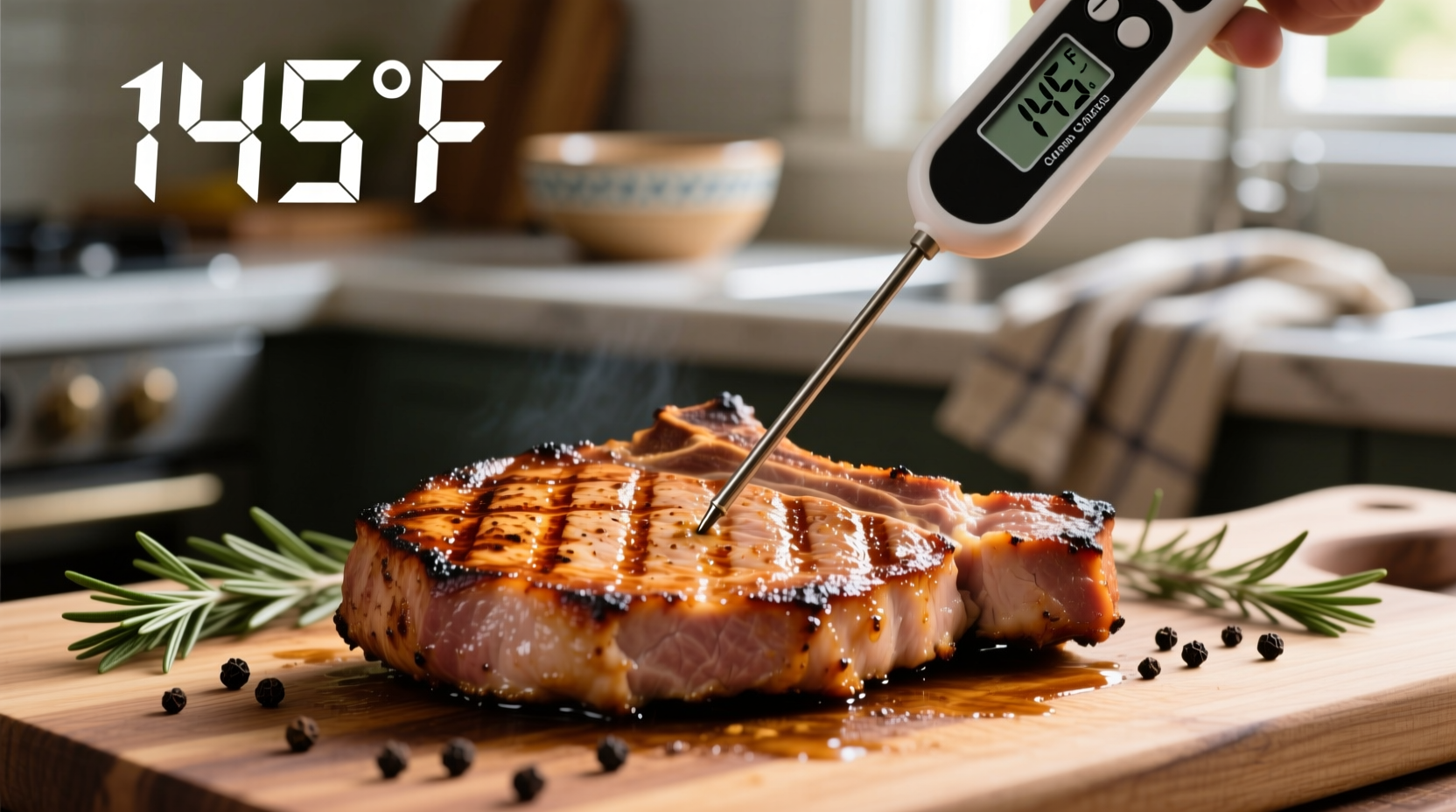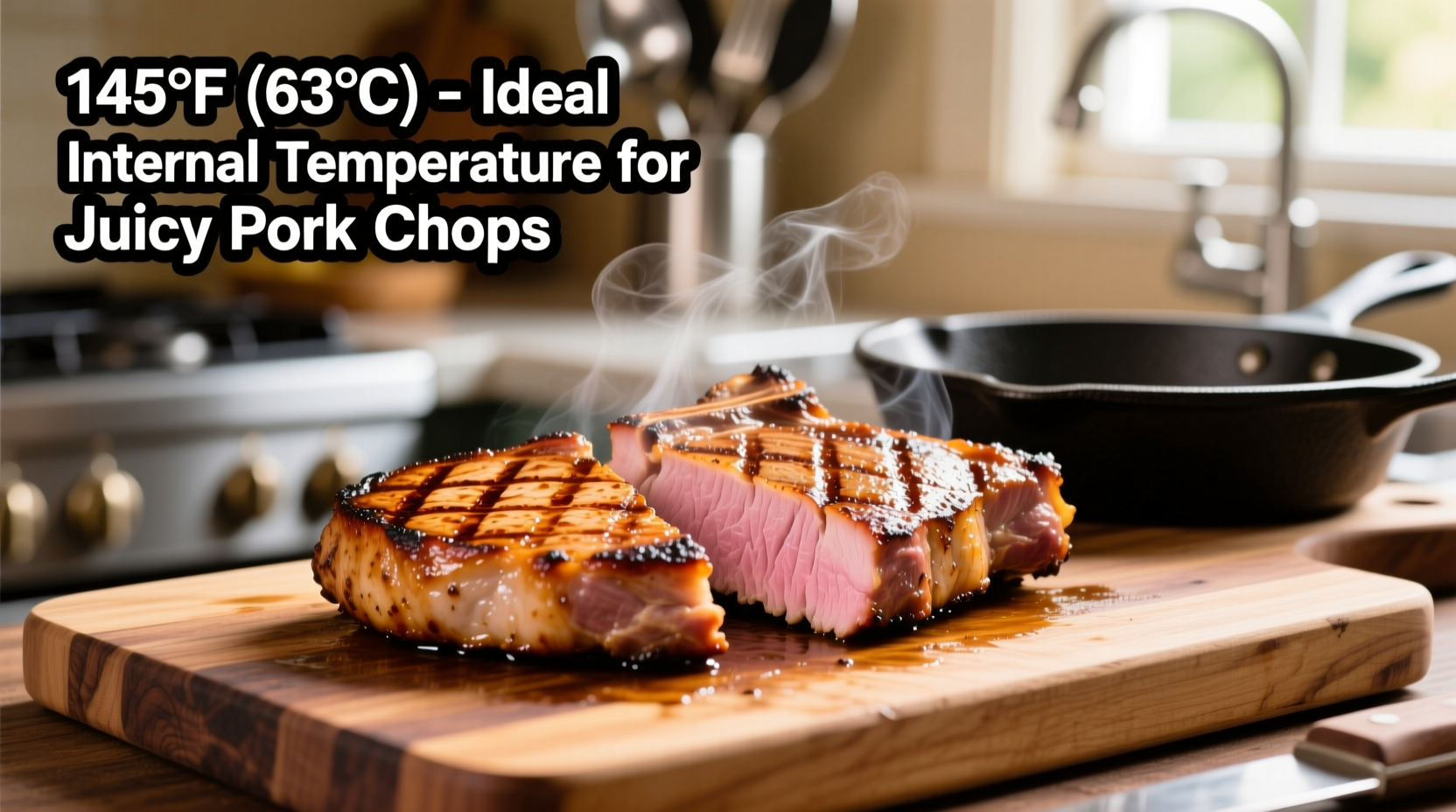The perfect internal temperature for safely cooked pork chops is 145°F (63°C), followed by a mandatory 3-minute rest period. This USDA-approved standard ensures both food safety and optimal juiciness, replacing outdated recommendations of 160°F that often resulted in dry, overcooked meat.
Why Temperature Matters: Safety Meets Perfection
Getting pork chop temperature right transforms your cooking from hit-or-miss to consistently delicious. Modern food science has revolutionized pork preparation—today's commercially raised pork is free from trichinosis, allowing for lower safe temperatures than in previous decades. When you hit that precise 145°F mark, you're not just following guidelines; you're unlocking tender, juicy results while eliminating food safety risks.
The Science Behind the Magic Number
For years, cooks were told to cook pork to 160°F. The USDA updated this recommendation in 2011 after extensive research confirmed that 145°F with a 3-minute rest achieves the same pathogen destruction as higher temperatures. During this rest period, residual heat continues cooking the meat while fibers relax, redistributing juices throughout the chop.
| Temperature Standard | Year Established | Resulting Texture | Food Safety Status |
|---|---|---|---|
| 160°F (71°C) | Pre-2011 | Dry, tough, gray | Safe but suboptimal |
| 145°F (63°C) + 3-min rest | 2011-Present | Medium-rare, juicy, pink center | USDA-certified safe |
Essential Tools for Temperature Precision
Don't guess—verify with these thermometer options:
- Digital instant-read thermometers (like ThermoPro or Lavatools): Provide accurate readings in 3-5 seconds
- Leave-in probe thermometers: Monitor temperature continuously during cooking
- Thermometer hygiene tip: Sanitize probe with rubbing alcohol between readings to prevent cross-contamination
Insert your thermometer into the thickest part of the chop, avoiding bone or fat pockets which give false readings. For best results, take multiple readings across the chop.

Your Step-by-Step Cooking Roadmap
Preparation Phase
Bring chops to room temperature (30-60 minutes out of fridge) for even cooking. Pat thoroughly dry—moisture creates steam instead of sear. Season generously, remembering that salt draws out moisture initially but ultimately enhances flavor penetration.
Cooking Execution
Whether pan-searing, grilling, or baking, follow this universal sequence:
- Preheat cooking surface to 375-400°F
- Sear 2-3 minutes per side for initial crust
- Reduce heat and continue cooking until 140°F internal temperature
- Remove from heat—the temperature will rise 5°F during rest
Critical Resting Period
That mandatory 3-minute rest isn't optional—it's when the magic happens. Tent loosely with foil and let chops rest on a wire rack (not a plate, which traps steam). During this time:
- Internal temperature stabilizes at 145°F
- Muscle fibers relax, reabsorbing juices
- Carryover cooking completes the process
Context Matters: Adjusting for Your Situation
While 145°F is the universal standard, consider these variables:
- Thickness impact: Chops under 1" thick require vigilant monitoring as they can overshoot temperature quickly
- Cooking method differences: Grilled chops experience more temperature fluctuation than oven-finished chops
- Bone-in vs. boneless: Bone conducts heat differently—take readings away from the bone
- Starting temperature: Chops straight from fridge need 5-7 minutes longer than room-temperature chops
Troubleshooting Common Temperature Challenges
Problem: Temperature rises too fast during rest
Solution: Remove chops at 140°F instead of 142°F for thinner cuts
Problem: Uneven cooking with raw center
Solution: Finish in 300°F oven after searing to gently raise internal temperature
Problem: Gray band around edge despite correct internal temp
Solution: Increase initial sear temperature and minimize flipping
Visual Doneness Guide (When Thermometer Isn't Available)
While a thermometer is essential for food safety, these visual cues can supplement your judgment:
- 145°F (Perfect): Slight pink center, firm but yielding to touch (like the base of your thumb when making an 'OK' sign)
- 160°F (Overcooked): Completely white with shrunken appearance, very firm texture
- 130°F (Undercooked): Bright red center, extremely soft with liquid pooling
Important: Visual assessment alone isn't reliable for food safety—always verify with a thermometer for pork.
Professional Technique: The Temperature Sweet Spot
Many chefs actually remove chops at 140°F, knowing carryover heat will reach 145°F during rest. This precision prevents overshooting the target temperature. For restaurant-quality results:
- Monitor temperature continuously during final cooking phase
- Remove at 140°F for standard thickness (1-1.5")
- Immediately transfer to resting surface
- Verify final temperature after 3 minutes











 浙公网安备
33010002000092号
浙公网安备
33010002000092号 浙B2-20120091-4
浙B2-20120091-4